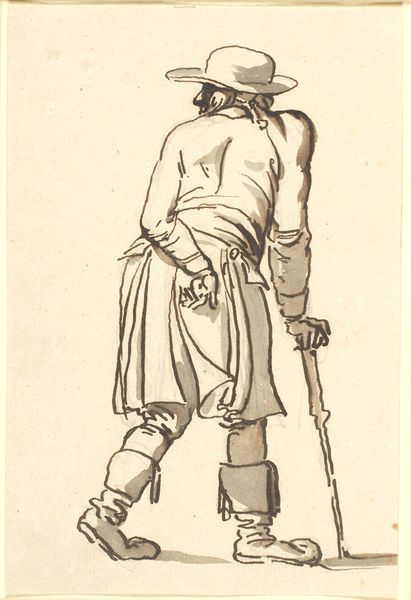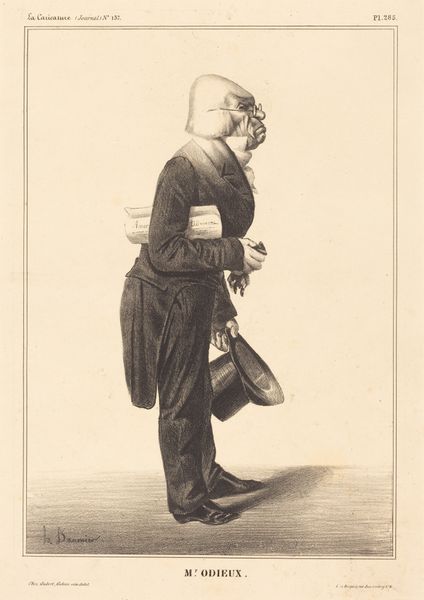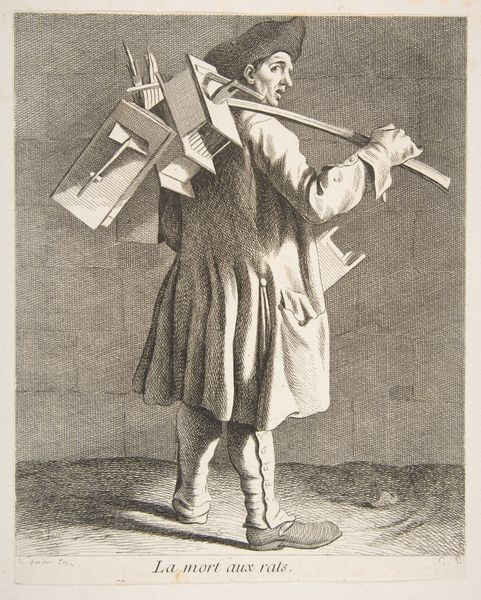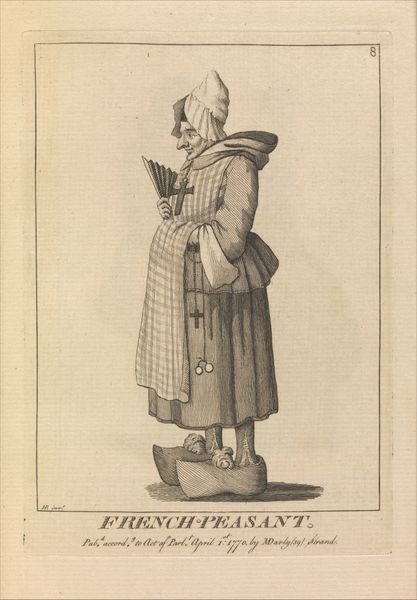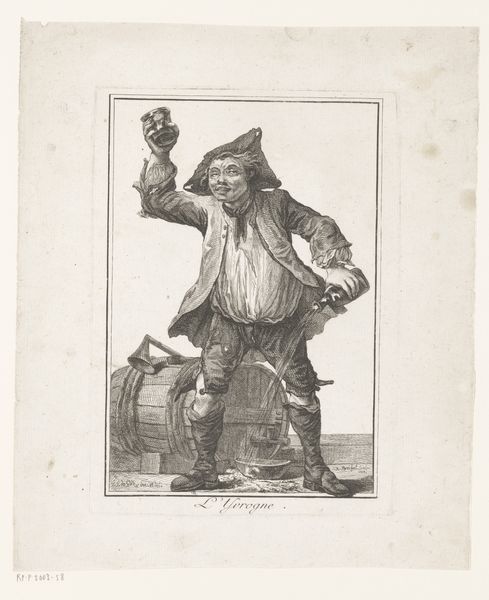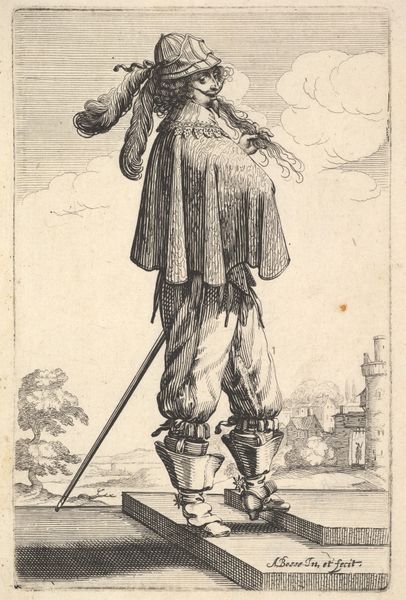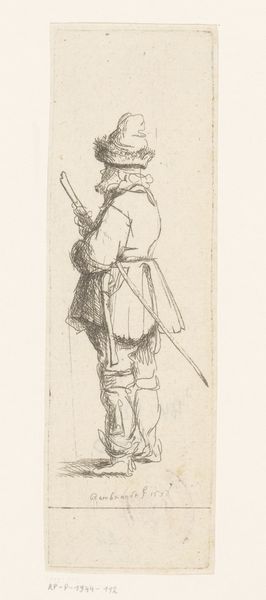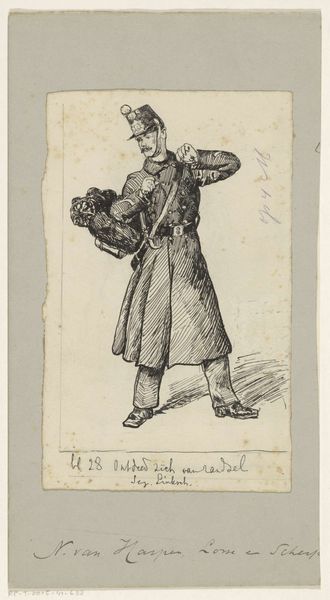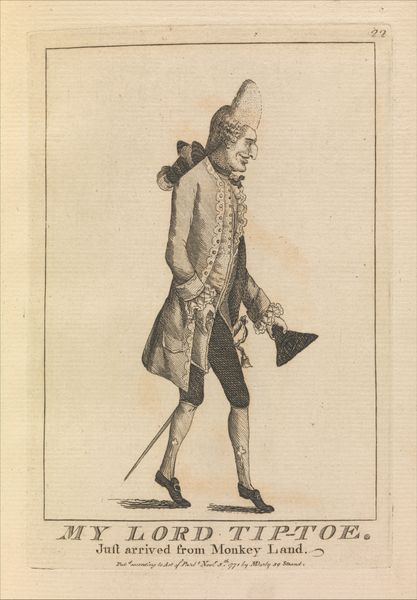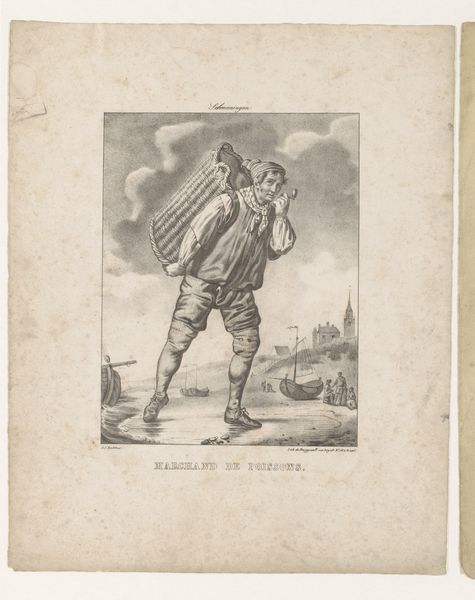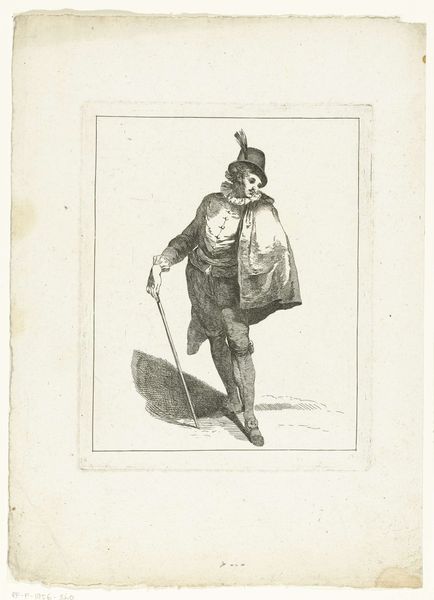
Dimensions: plate: 5 15/16 x 4 1/8 in. (15.1 x 10.4 cm) sheet: 8 13/16 x 5 7/16 in. (22.4 x 13.8 cm)
Copyright: Public Domain
Henry William Bunbury made this print called "Happy Peasant" in 1771 using etching in London. It's interesting to think about how this image of rural life was consumed in a rapidly urbanizing England, when London was becoming the center of a vast empire. The print speaks to the politics of imagery that existed at the time, particularly about the construction of class and the way social status was represented. Note the way Bunbury exaggerates the peasant’s features, making him appear almost cartoonish. This could be seen as a commentary on the romanticized view of rural life that was popular among the upper classes. During this time many satirical prints were sold in print shop windows for a few pence, thus it is important to see how prints operated within a specific visual culture. Art historians consult a variety of sources, like period newspapers, political pamphlets, and the records of art institutions to interpret images like these. These sources shed light on the social conditions that shape artistic production. They help us understand how Bunbury's art engaged with the social norms of his time.
Comments
No comments
Be the first to comment and join the conversation on the ultimate creative platform.

